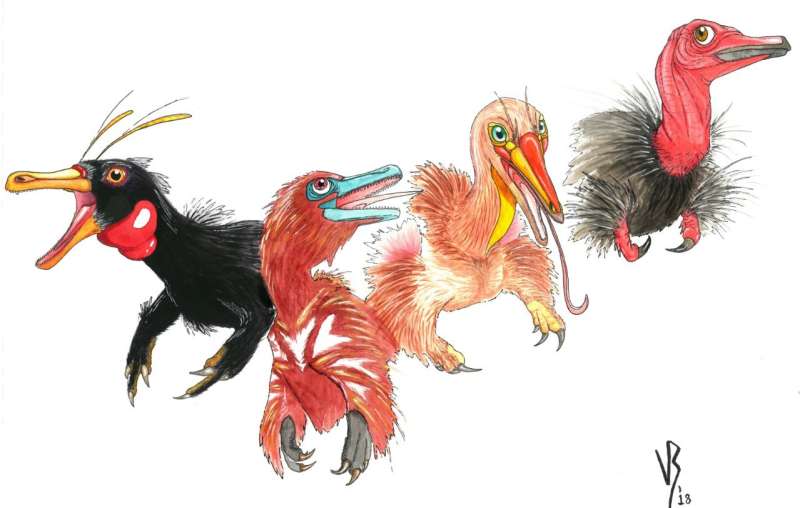Newly discovered dinosaurs fill in evolutionary gap spanning 70 million years

Two newly discovered dinosaurs may be missing links in an unusual lineage of predators that lived between 160 million and 90 million years ago, new research suggests.
The two species, Xiyunykus and Bannykus, were theropods—a group of bipedal, largely carnivorous dinosaurs. Some theropods eventually gave rise to birds, while another branch, the alvarezsauroids, evolved into strange-looking insectivores with short arms and hands with an enlarged finger for digging into nests.
But until now, little was understood about how this change happened because of the 70-million-year evolutionary gap separating the insect-eating alvarezsauroids from the earliest known member of the group, Haplocheirus.
"The significance of Xiyunykus and Bannykus is that they fall within that gap and shed light on patterns of evolution within Alvarezsauroidea," explained Corwin Sullivan, a University of Alberta paleontologist who participated in the international study.
"These specimens greatly improve the scientific community's understanding of the early stages of alvarezsauroid evolution and give us a better idea of what early alvarezsauroids were like."
Sullivan noted the new specimens reveal clues about how the creatures' diet shifted from meat to insects.
"The forelimbs show some adaptations for digging, which would later become more exaggerated, and some features of their skulls also resemble those of insectivorous alvarezsauroids. The hindlimbs are less modified, suggesting the arms and head of alvarezsauroids underwent significant change before the legs did.
"There's still a lot to learn about the early evolution of alvarezsauroids," added Sullivan, who is also curator of the Philip J. Currie Dinosaur Museum.
"Xiyunykus and Bannykus are currently represented by one incomplete specimen apiece. Those specimens provide a good deal of intriguing information, but we'll need many more fossils before we can be confident that we have a clear understanding of how alvarezsauroids, to put it bluntly, got so weird."
The paper, "Two Early Cretaceous Fossils Document Transitional Stages in Alvarezsaurian Dinosaur Evolution," was published in Current Biology.
More information: Xing Xu et al. Two Early Cretaceous Fossils Document Transitional Stages in Alvarezsaurian Dinosaur Evolution, Current Biology (2018). DOI: 10.1016/j.cub.2018.07.057
Journal information: Current Biology
Provided by University of Alberta




















